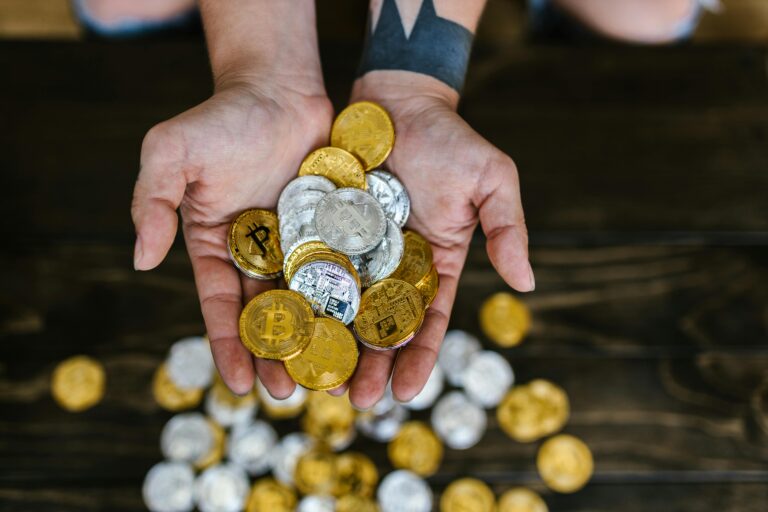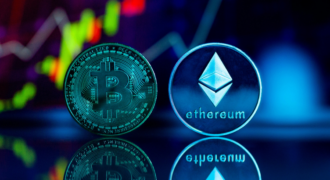The world of finance is undergoing a massive transformation. At the heart of this change is DeFi, or Decentralized Finance, a revolutionary movement that is reshaping the financial landscape. DeFi is creating an alternative to traditional financial systems, replacing intermediaries like banks, brokers, and centralized exchanges with decentralized technologies powered by blockchain.
But what exactly is DeFi, and how can it empower you? In this article, we’ll explore the fundamental principles of DeFi, its most popular use cases, and how it’s democratizing access to financial services for everyone—regardless of location or background.
What is DeFi?
Decentralized Finance (DeFi) refers to a collection of financial services and applications that run on blockchain networks, primarily Ethereum, but also on other blockchains like Binance Smart Chain (BSC), Solana, and Avalanche. The goal of DeFi is to recreate and improve upon traditional financial services, such as lending, borrowing, trading, and investing, but without relying on centralized institutions like banks or governments.
In DeFi, financial transactions are managed by smart contracts, which are self-executing contracts with the terms of the agreement directly written into code. This eliminates the need for intermediaries, reduces costs, and increases transparency.
How Does DeFi Work?
At its core, DeFi leverages blockchain’s decentralization, where every participant has direct control over their assets and can engage in peer-to-peer financial activities without the need for a third party. Here’s how the main components work:
Smart Contracts: These are the building blocks of DeFi. Smart contracts automatically execute transactions when certain conditions are met, allowing users to lend, borrow, trade, and earn interest without needing a middleman.
Decentralized Apps (DApps): DeFi services are typically accessed through decentralized apps, or DApps, which run on blockchain networks. These apps enable activities like yield farming, decentralized lending, and token swaps.
Liquidity Pools: DeFi platforms often rely on liquidity pools, which are pools of funds locked into smart contracts to facilitate trades and lend assets. Users can contribute their crypto assets to these pools and earn rewards in return.
Key DeFi Use Cases
DeFi is not just a buzzword—it’s a powerful movement that is unlocking new financial opportunities for everyone. Below are the core use cases that are driving the DeFi revolution:
1. Lending and Borrowing
In traditional finance, borrowing or lending money often requires intermediaries like banks or lending institutions. DeFi allows individuals to lend their cryptocurrency to others and earn interest, or borrow funds by collateralizing their own crypto holdings.
Lenders: Users can lend their digital assets to a decentralized platform and earn interest in return, often at much higher rates than traditional savings accounts.
Borrowers: Users can borrow cryptocurrency without needing a credit score or central authority. Instead, they provide collateral (usually in the form of other crypto assets) to secure the loan.
Popular platforms like Aave, Compound, and MakerDAO are at the forefront of decentralized lending and borrowing, allowing users to access capital in a peer-to-peer, trustless environment.
2. Yield Farming
Yield farming is one of the most exciting aspects of DeFi, allowing users to earn rewards by providing liquidity to DeFi protocols.
By depositing assets into liquidity pools, users can participate in yield farming and earn rewards in the form of interest, transaction fees, or newly minted tokens. This process is often referred to as liquidity mining, and it allows users to maximize their earnings while participating in DeFi ecosystems.
For example, Uniswap, a decentralized exchange (DEX), allows users to provide liquidity to trading pairs and earn a share of the transaction fees.
3. Decentralized Exchanges (DEXs)
Decentralized exchanges like Uniswap, SushiSwap, and PancakeSwap are revolutionizing how we trade assets. Unlike traditional centralized exchanges (CEXs) like Coinbase or Binance, DEXs allow users to trade directly from their wallets without the need for a centralized authority.
- Peer-to-Peer Trading: On DEXs, users trade directly with each other using liquidity pools, where users contribute their assets to facilitate trades.
- No Custody: DEXs don’t hold user funds, meaning traders retain full control over their assets at all times. This eliminates the risks associated with hacks and exchange shutdowns.
4. Stablecoins
One of the challenges in the world of cryptocurrencies is volatility. To address this, stablecoins have emerged as a solution. These digital assets are pegged to a stable asset, like the US Dollar, and are used to facilitate transactions and mitigate the risks associated with price swings in the broader crypto market.
Popular stablecoins in the DeFi space include Dai (DAI), Tether (USDT), and USD Coin (USDC). They’re widely used for trading, lending, and as collateral for loans.
Benefits of DeFi
DeFi isn’t just a fad—it’s changing the way we think about finance. Here are some of the key benefits that make decentralized finance so appealing:
Accessibility: Traditional financial services often require users to have a bank account, a good credit score, or approval from a centralized institution. In DeFi, anyone with an internet connection can access services like lending, borrowing, and trading, regardless of their geographic location or financial status.
Transparency: Blockchain’s transparent nature ensures that all transactions and contract terms are visible and verifiable by anyone. This reduces the risk of fraud and enhances trust in the system.
Control Over Your Assets: DeFi gives users full control over their funds. There’s no need to trust a third-party institution with your assets, which reduces the risk of censorship or loss due to centralized authority failures.
Interoperability: Many DeFi projects are designed to work together, allowing users to seamlessly interact across multiple platforms. Whether you’re borrowing from one protocol and lending on another, the interconnectedness of DeFi protocols provides more options and flexibility.
Higher Yield: Because DeFi platforms cut out intermediaries, they often offer higher interest rates on savings and better returns on investments than traditional financial institutions.
Risks of DeFi
While DeFi presents an exciting future for finance, it’s important to understand the risks involved:
Smart Contract Vulnerabilities: DeFi platforms rely on smart contracts, which can have bugs or vulnerabilities that hackers can exploit. It’s important to use platforms with audited contracts and a strong security track record.
Regulatory Uncertainty: As DeFi grows, regulators are beginning to pay closer attention. While this could lead to greater legitimacy, it could also introduce new challenges for users and developers.
Impermanent Loss: Yield farming and liquidity provision come with the risk of impermanent loss, where you might end up with fewer assets than you started with due to fluctuating market prices.
The Future of DeFi
The DeFi space is rapidly expanding, and its influence is expected to grow in the coming years. More financial services, including insurance, derivatives, and prediction markets, are likely to be decentralized, further transforming traditional finance. With innovations like Layer 2 solutions and cross-chain interoperability, the DeFi ecosystem is poised to become even more efficient and accessible.
As the DeFi revolution continues to unfold, it’s clear that decentralized finance is not just a trend—it’s the future of the financial world.
Conclusion
DeFi is more than just a buzzword—it’s a transformative movement that’s democratizing finance and giving power back to individuals. By removing intermediaries, improving accessibility, and offering innovative financial products, DeFi is paving the way for a more inclusive, transparent, and efficient financial system.
If you’re ready to be part of the revolution, the world of DeFi offers endless opportunities. Whether you’re looking to lend, borrow, trade, or earn passive income, DeFi has something for everyone—empowering you to take control of your financial future.






